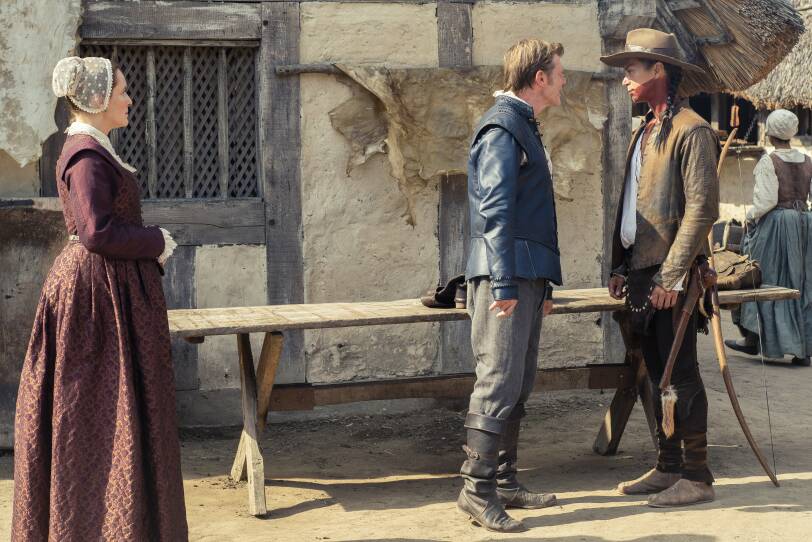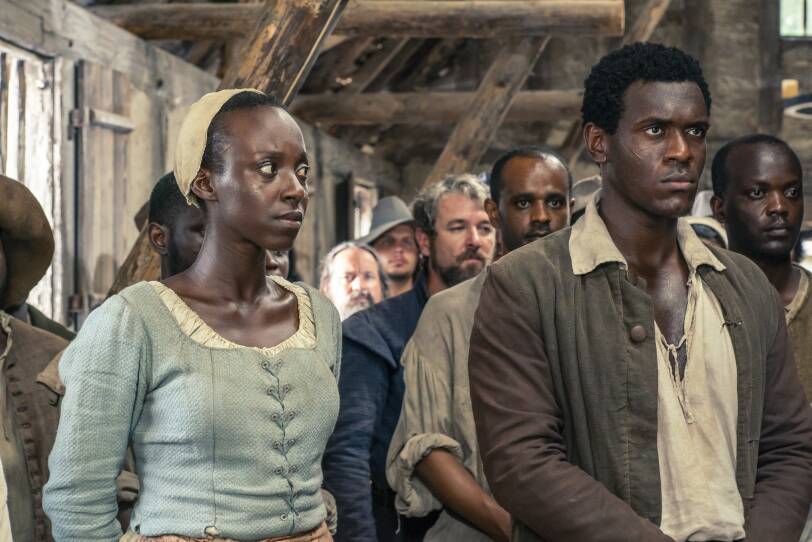If you’re a big Jamestownfan like we are, you know that women played a significant role in colonial Virginia. Over the past three seasons, we’ve seen Alice, Verity, Jocelyn and other women of the colony navigate all sorts of political and personal challenges in the New World. But the Jamestown we see on the screen – with witch trials, assault, and some serious plotting – is still a romanticized version of the truth. So what was life really like for women in Jamestown? We dug into the history books to find out more.

We know the show is based on true history. After the first group of male colonists landed in Virginia in 1607, the gender imbalance started to become a problem. Women were in high demand, so Jamestown’s leaders set up a marital immigration process to bring wives to the colony.
Leaving England for Jamestown allowed working-class Englishwomen to avoid a life of domestic service in their home country. It turns out that female colonists enjoyed freedoms that they probably would have never gotten back in England. Unlike on the show, women were usually given the honor of choosing their husband after they arrived. Once a woman chose her new husband, the man would pay back the Virginia Company and cover the costs of getting her to the New World in the form of “good leaf” tobacco – leading to the term “tobacco wives.”
Women who came to the colony could become landowners themselves, and if they become widows – as we've seen with Jocelyn – they were allowed to inherit substantial amounts of land which made them economically independent and gave them the option of choosing not to re-marry. What a novel idea!
Of course, English women were not the only women in Virginia at this time. Colonists encountered Native Americans, and captured Africans arrived in 1619 and were forced into servitude.
Here are some stories from real-life women in colonial Virginia.
Temperance Flowerdew Barrow Yeardley West
Temperance is one of the only characters from Jamestown based on a real person. Now, this was one tough woman! She arrived in Jamestown after a treacherous voyage from England, just ahead of the “Starving Time,” a harsh winter in which 80 percent of Jamestown’s colonists died. But Temperance survived – and thrived. Her husband from England died in 1613 and she went on to marry George Yeardley, future governor of Virginia. And (possible spoiler alert!) when George died and left her land in his will, Temperance became one of the wealthiest women in all of Virginia.

Cockacoeske, “Queen of the Pamunkey”
One of the reasons we love Jamestown is its inclusive representation of Native Americans on screen. After her husband died, Cockacoeske became the leader of the Pamunkey, one of the remaining Powhatan tribes. Playing a crucial role in political negotiations between the English colonists and Indians, Cockacoeske managed to protect her tribe from future attacks. She met with colonial leaders, including Governor William Berkeley, and signed the Treaty of Middle Plantation, which gave the tribes legal protections under Virginia’s Royal government.
Anne Burras
Anne was venturing into the unknown when she arrived in Jamestown in 1608 at just 14 years old. Like Mercy, she came as a maidservant – but that all changed when her mistress died. Just two months later, Anne took part in the first known marriage in the colony when she married laborer John Laydon. Along with Temperance Flowerdew, her resilience helped her survive the deadly winter of 1609, and go on to flourish – she had four daughters in the colony.

Angelo
Angelo was the first documented African woman in the Jamestown settlement. Like Maria and Pedro, she arrived in 1619 from the Portuguese colony of Angola, and was originally bound for Mexico before her ship was intercepted in the Caribbean. The Africans were taken to Virginia and bought by wealthy English planters. Sadly, not much else is known about Angelo's life, aside from her being listed in official documents as a servant in the household of Capt. William Pierce in 1625.
Sarah Harrison
Sarah Harrison’s story shows that the independent streak of many of Jamestown’s women is surprisingly accurate. According to records, Harrison refused to comply with a key part of a marriage ceremony. When the officiant asked for her promise to “obey” her husband, Harrison supposedly said “No obey.” She repeated the response two more times, until the clergyman skipped over that part of the ceremony. We don't know about you, but we could see Verity doing the same thing!
Ann Jackson
Ann Jackson’s quest for a new life did not go as planned. She sailed for Virginia in 1621 in a group of 56 skilled women, hoping to join her brother, who was already living in the colony. Along with 17 other women, she was captured by Powhatan Indians in an attack on the settlement in 1622. She survived six years in captivity – but after her experiences in the new world, she would eventually return to England.
Sources:
In Jamestown, a new exhibition pays homage to the women history overlooked
Historic Jamestown: The First Africans
The Mail-Order Brides of Jamestown, Virginia
Were 17th-century women really as rebellious as Jamestown makes out? Absolutely
TENACITY: Women in Jamestown and Early Virginia
Historic Jamestown: The Indispensable Role of Women at Jamestown




